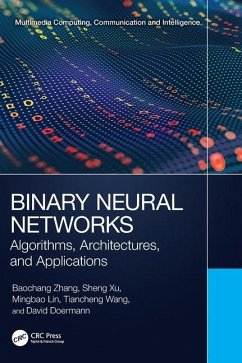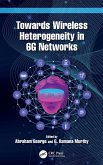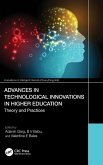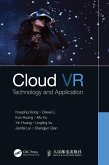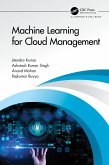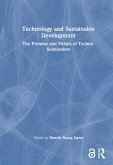Baochang Zhang, Sheng Xu, Mingbao Lin, Tiancheng Wang, David Doermann
Binary Neural Networks
Algorithms, Architectures, and Applications
Baochang Zhang, Sheng Xu, Mingbao Lin, Tiancheng Wang, David Doermann
Binary Neural Networks
Algorithms, Architectures, and Applications
- Gebundenes Buch
- Merkliste
- Auf die Merkliste
- Bewerten Bewerten
- Teilen
- Produkt teilen
- Produkterinnerung
- Produkterinnerung
Our book will also introduce NAS due to its superiority and state-of-the-art performance in various applications, such as image classification and object detection.
Andere Kunden interessierten sich auch für
![Towards Wireless Heterogeneity in 6g Networks Towards Wireless Heterogeneity in 6g Networks]() Towards Wireless Heterogeneity in 6g Networks159,99 €
Towards Wireless Heterogeneity in 6g Networks159,99 €![The Spirit of Recovery The Spirit of Recovery]() The Spirit of Recovery160,99 €
The Spirit of Recovery160,99 €![Digital Freedom Digital Freedom]() Faizur RashidDigital Freedom160,99 €
Faizur RashidDigital Freedom160,99 €![Advances in Technological Innovations in Higher Education Advances in Technological Innovations in Higher Education]() Advances in Technological Innovations in Higher Education160,99 €
Advances in Technological Innovations in Higher Education160,99 €![Cloud VR Cloud VR]() Huaping XiongCloud VR171,99 €
Huaping XiongCloud VR171,99 €![Machine Learning for Cloud Management Machine Learning for Cloud Management]() Jitendra KumarMachine Learning for Cloud Management203,99 €
Jitendra KumarMachine Learning for Cloud Management203,99 €![Technology and Sustainable Development Technology and Sustainable Development]() Technology and Sustainable Development160,99 €
Technology and Sustainable Development160,99 €-
-
-
Our book will also introduce NAS due to its superiority and state-of-the-art performance in various applications, such as image classification and object detection.
Hinweis: Dieser Artikel kann nur an eine deutsche Lieferadresse ausgeliefert werden.
Hinweis: Dieser Artikel kann nur an eine deutsche Lieferadresse ausgeliefert werden.
Produktdetails
- Produktdetails
- Verlag: CRC Press
- Seitenzahl: 203
- Erscheinungstermin: 13. Dezember 2023
- Englisch
- Abmessung: 254mm x 178mm x 14mm
- Gewicht: 599g
- ISBN-13: 9781032452487
- ISBN-10: 103245248X
- Artikelnr.: 68711947
- Herstellerkennzeichnung
- Libri GmbH
- Europaallee 1
- 36244 Bad Hersfeld
- gpsr@libri.de
- Verlag: CRC Press
- Seitenzahl: 203
- Erscheinungstermin: 13. Dezember 2023
- Englisch
- Abmessung: 254mm x 178mm x 14mm
- Gewicht: 599g
- ISBN-13: 9781032452487
- ISBN-10: 103245248X
- Artikelnr.: 68711947
- Herstellerkennzeichnung
- Libri GmbH
- Europaallee 1
- 36244 Bad Hersfeld
- gpsr@libri.de
Baochang Zhang is a full Professor with Institute of Artificial Intelligence, Beihang University, Beijing, China. He was selected by the Program for New Century Excellent Talents in University of Ministry of Education of China, also selected as Academic Advisor of Deep Learning Lab of Baidu Inc., and a distinguished researcher of Beihang Hangzhou Institute in Zhejiang Province. His research interests include explainable deep learning, computer vision and patter recognition. His HGPP and LDP methods were state-of-the-art feature descriptors, with 1234 and 768 Google Scholar citations, respectively. Both are "Test-of-Time" works. Our 1-bit methods achieved the best performance on ImageNet. His group also won the ECCV 2020 tiny object detection, COCO object detection, and ICPR 2020 Pollen recognition challenges. Sheng Xu received the B.E. degree in Automotive Engineering from Beihang University, Beijing, China. He is currently a Ph.D. with the school of Automation Science and Electrical Engineering, Beihang University, Beijing, China, specializing in computer vision, model quantization, and compression. He has made significant contributions to the field and has published about a dozen papers as the first author in top-tier conferences and journals such as CVPR, ECCV, NeurIPS, AAAI, BMVC, IJCV, and ACM TOMM. Notably, he has 4 papers selected as oral or highlighted presentations by these prestigious conferences. Furthermore, Sheng Xu actively participates in the academic community as a reviewer for various international journals and conferences, including CVPR, ICCV, ECCV, NeurIPS, ICML, and IEEE TCSVT. His expertise has also led to his group's victory in the ECCV 2020 tiny object detection challenge. Mingbao Lin finished his M.S.-Ph.D. study and obtained the Ph.D. degree in intelligence science and technology from Xiamen University, Xiamen, China, in 2022. Earlier, he received the B.S. degree from Fuzhou University, Fuzhou, China, in 2016. He is currently a senior researcher with the Tencent Youtu Lab, Shanghai, China. His publications on top-tier conferences/journals include IEEE TPAMI, IJCV, IEEE TIP, IEEE TNNLS, CVPR, NeurIPS, AAAI, IJCAI, ACM MM and so on. His current research interest is to develop efficient vision model, as well as information retrieval. Tiancheng Wang received the B.E. degree in Automation from Beihang University, Beijing, China. He is currently pursuing the Ph.D. degree with the school of Institute of Artificial Intelligence, Beihang University, Beijing, China. During undergraduate, he has been awarded the title of Merit Student for several consecutive years, and has received various scholarships including academic excellence scholarship and academic competitions scholarship, etc. He was involved in several AI projects, including behavior detection and intention understanding research and unmanned air-based vision platform, etc. Now, his current research interests include deep learning and network compression, his goal is to explore the highly energy-saving model and drive the deployment of neural networks in embedded devices. Dr. David Doermann is a Professor of Empire Innovation at the University at Buffalo (UB) and the Director of the University at Buffalo Artificial Intelligence Institute. Prior to coming to UB, he was a program manager at the Defense Advanced Research Projects Agency (DARPA), where he developed, selected and oversaw approximately $150 million in research and transition funding in the areas of computer vision, human language technologies and voice analytics. He coordinated performers on all of the projects, orchestrating consensus, evaluating cross team management and overseeing fluid program objectives.
Chapter 1: Introduction.
Chapter 2: Quantization of Neural Networks.
Chapter 3: Algorithms for Binary Neural Networks.
Chapter 4: Binary Neural Architecture Search.
Chapter 5: Applications in Natural Language Processing.
Chapter 6: Applications in Computer Vision.
Bibliography.
Chapter 2: Quantization of Neural Networks.
Chapter 3: Algorithms for Binary Neural Networks.
Chapter 4: Binary Neural Architecture Search.
Chapter 5: Applications in Natural Language Processing.
Chapter 6: Applications in Computer Vision.
Bibliography.
Chapter 1: Introduction.
Chapter 2: Quantization of Neural Networks.
Chapter 3: Algorithms for Binary Neural Networks.
Chapter 4: Binary Neural Architecture Search.
Chapter 5: Applications in Natural Language Processing.
Chapter 6: Applications in Computer Vision.
Bibliography.
Chapter 2: Quantization of Neural Networks.
Chapter 3: Algorithms for Binary Neural Networks.
Chapter 4: Binary Neural Architecture Search.
Chapter 5: Applications in Natural Language Processing.
Chapter 6: Applications in Computer Vision.
Bibliography.

